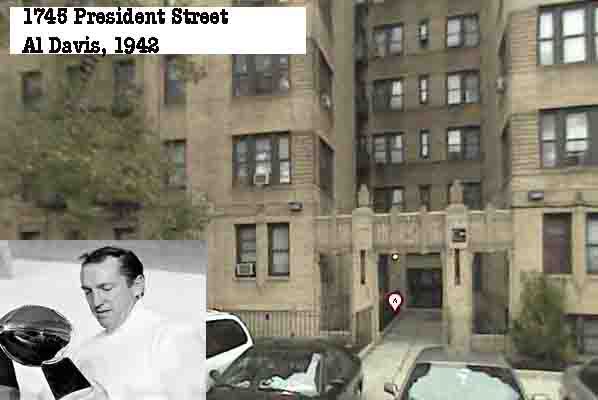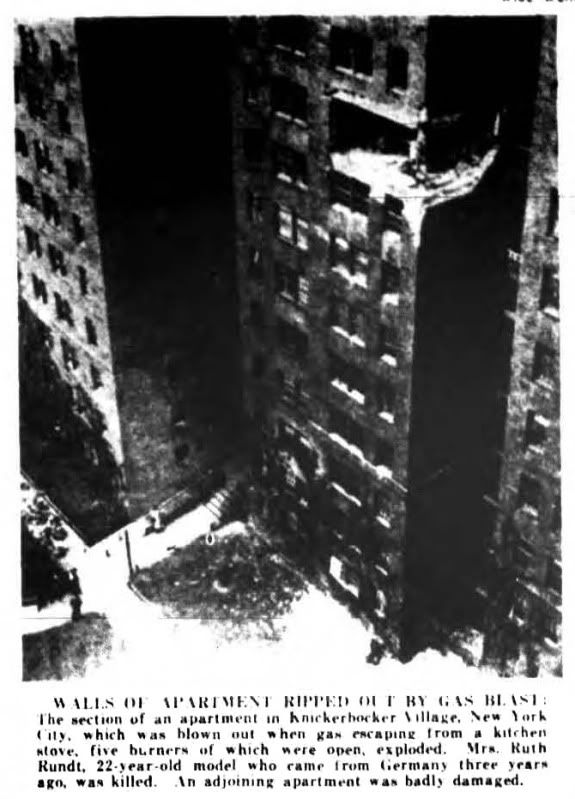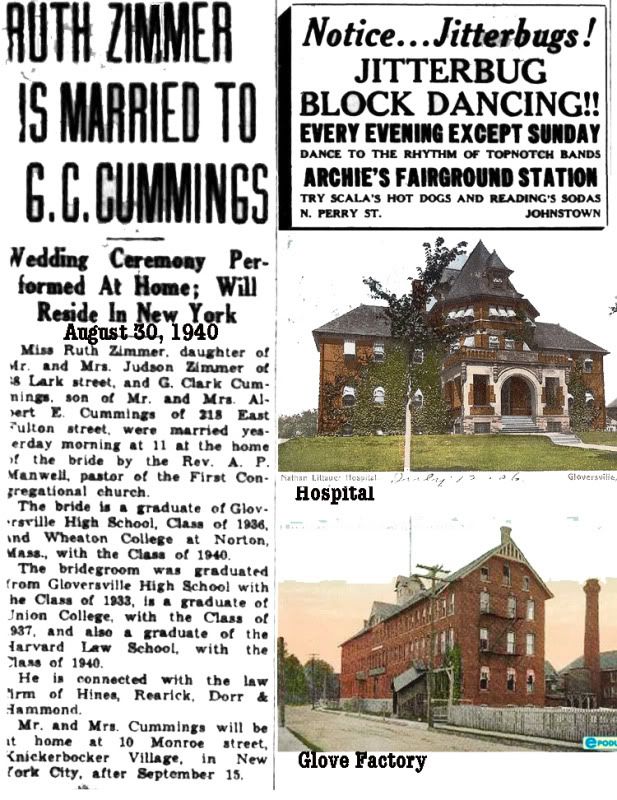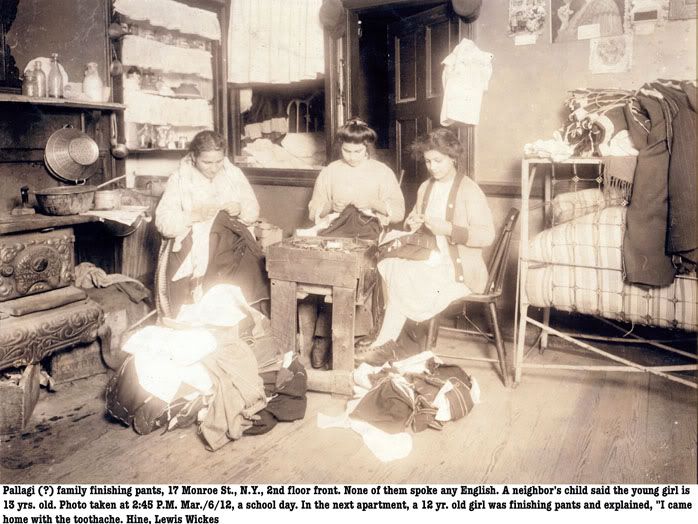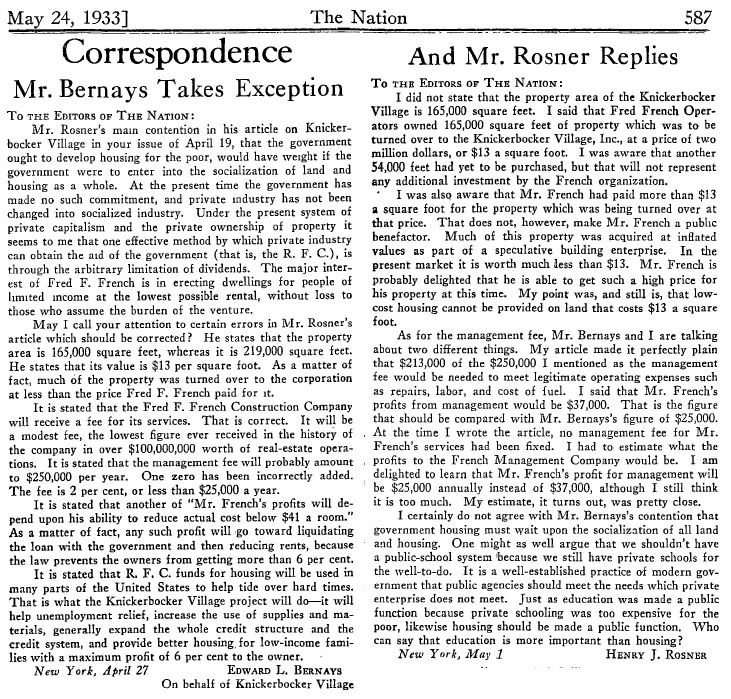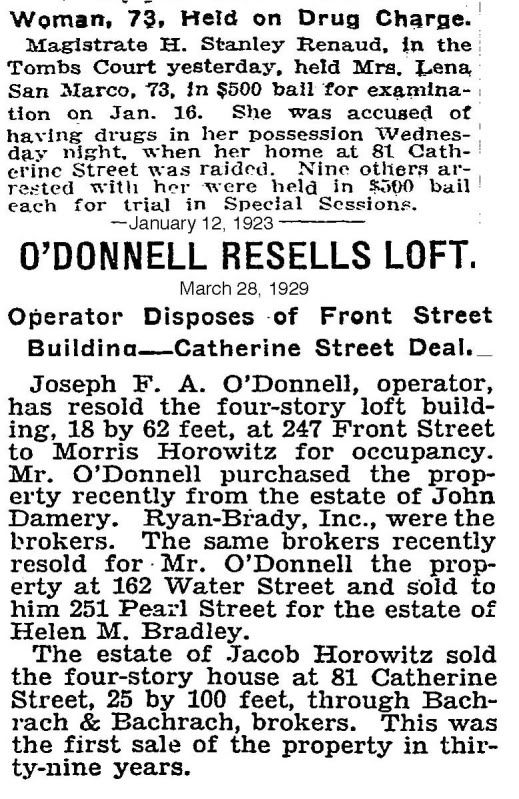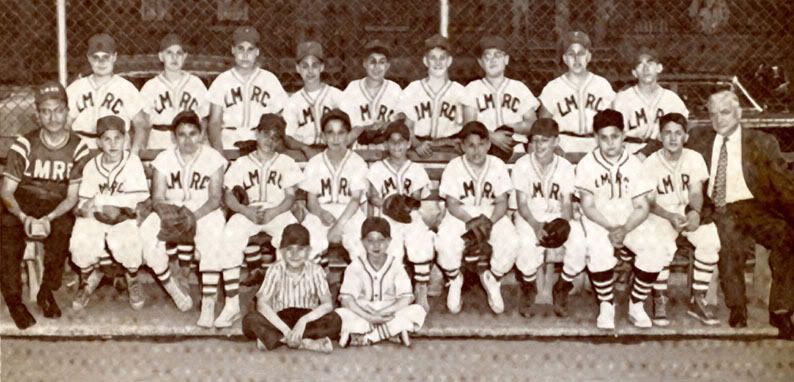Tuesday, October 11, 2011
Sunday, October 9, 2011
Al Davis: A 4th Warder In His Heart?
But he was a Brooklyn boy instead. He was living in Crown Heights in 1942. His dad Louis operated Little Dutchess Undergarment Factory on Johnson Street in Brooklyn at that time.
Allen "Al" Davis, the man who is synonymous with the Oakland Raiders franchise of the National Football League and its earlier American Football League incarnation, was born on the Fourth of July, 1929 into a Jewish family in Brockton, Massachusetts. Raised in Brooklyn and educated at the borough's Erasmus High School, he played football at Syracuse University, but was cut from the varsity team.
Monday, October 3, 2011
RIP Arnold Wenig
Sad news as we hear of Arnold's passing. KV's "greatest generation" dwindles down to a precious few.
from Sarah this past weekend:
I'm sorry to send word of my father's passing this morning. He had an easy time, which he surely deserved. Arnold Wenig was a very good friend to have. Without question he befriended many in whom he saw were at a loss for a good friend; he invested a great deal in people who were long shots. It was me and him for the past eight years or so and we fought the good fight side by side. I am sorry for some of the times that I didn't take his advise, and very grateful for the advice about life that I did take. He told me two things that are very important for a daughter to hear. He said, "Sarah, never forget! You live in the big house.” and he told me, "Just remember, if you are going through a very bad time that things change. They always change at some point for the better. So never, ever give up." These movies made him cry: Pride of the Yankees, Captain Courageous and Boys Town. He was a pretty good dancer, too. While my father was with me in Boston we would get on the bus and go downtown, to the neighborhood stores, to see President Obama when he came to town and a Boston Pops concert on the Boston Common. He really liked Boston. However, just to let everybody know he was a NYer, upon learning of the Red Sox/Yankee rivalry when he got here - he switched teams from the Mets to the Yankees and used that to chat people up when he was out and about. He thought Boston fans were totally nuts. Never saw anything like it. They even had Red Sox caps printed in Hebrew at the Judaica stores in Brookline. After Whitey Bulger was arrested, he switched the script. I often took him down to Castle Island in South Boston. Whitey went there (Southie's version of the Brighton Beach Boardwalk) for the walking and to have conversations that couldn't be listened in on by the State Police - he had the FBI in his pocket, they weren't the problem. People you run into on Castle Island might very likely have known somebody whacked by Whitey or a kid that he got started on drugs. Nevertheless, my father would wheel himself over to somebody at Sullivan's snack stand and start the conversation with, "Tell me d'ya really think Whitey can get a fair trial here?" Most caught on because Southie people are a lot like people from the Lower East Side and Williamsburg in Brooklyn where my father grew up. When my Dad was lucky, the person my father had engaged would adjust their Red Sox caps and with a twinkle in their Irish blue eyes, reply, "Fair Enough." When things didn't go as my father planned, I'd roll my eyes and mouth the word 'Demented' and get Dad out of the line of fire, leaving the humorless son of a gun behind as fast as I could.
Saturday, October 1, 2011
The KV Gas Explosion Of 1939
This explosion was mentioned before in 2007 It occurred on the 9th floor of 12 Monroe Street
A 1940 KV Wedding
All the way from Gloversville to the 4th Ward, including stops at Harvard Law. Shows how KV was a very desirable address n those days. Included above is a 1940 ad and views of Gloversville. I checked the 1946 phone book, they're not there. The couple probably left for greener pastures by then.
The news portion of the above article is from an excellent ny state newspaper source
About Gloversville:
Gloversville is a city in Fulton County, New York, that was once the hub of America's glovemaking industry with over two hundred manufacturers in Gloversville and Johnstown. In 2000, Gloversville had a population of 15,413. Ten years later, the population had increased to 15,665. The region, known as "Kingsborough" was acquired by Sir William Johnson. In 1752, Arent Stevens bought land. Puritans from New England settled there at the end of the 18th century. The proximity of forests to supply bark for tanning made the community a center of leather production early in its history. It earned its name for being the center of the American glove making industry for many years. Upon the establishment of a United States Post Office in 1828, Gloversville became the official name of the community.In 1890-1950, 90 percent of all gloves sold in the United States were made in Gloversville. Large tanneries and glove shops employed nearly 80% of the residents of Gloversville and environs. Home workers sewed the gloves from leather that had been cut in factories. Related businesses, such as box makers, sewing machine repairmen, and thread dealers opened to serve the industry. In 1853, Gloversville incorporated as a village. In 1890, it incorporated as a city. Until 1936, Gloversville had a very active electric interurban line, the Fonda, Johnstown, and Gloversville. It ran from Gloversville, through Johnstown, along the Mohawk River to Amsterdam, then to Scotia, then across the Mohawk River, and into downtown Schenectady to the New York Central station. In 1932 in a bold move during the Great Depression it acquired unique Bullet cars in an attempt to revive business. Passenger service ended in 1936, but freight operation continued. Gloversville was the main headquarters for the Schine movie industry. The Glove Theatre was the Schines' favorite movie house. Hollywood movies sometimes premiered in Gloversville before they opened in California. The decline of the glove industry left the city financially depressed, with many downtown storefronts abandoned and store windows covered with plywood. Many of the houses were abandoned when people moved out of town to find jobs elsewhere.Note the reference to the Schine movie industry. More on this
Labels:
10 Monroe,
Fulton History Newspapers,
Gloversville,
Schine
Lamula Opposes Santangelo, 1951
He supported KVer Pat Picariello instead. I'm sure Lamula's claim of Santangelo's residency is true. It would be highly unlikely that a Judge would be residing at 9 Monroe in 1951. In 1946 Santangelo has 55 Oak Street as his address. That address would be eliminated by the construction of the Smith Projects.
1951: Mayor Impelliteri Swears In Robert Santangelo Of 9 Monroe Street
santangelo-1951
9 Monroe Street was the site of Kremo's, Judge Lupiano, a former KVer is mentioned in the article as well.
Justice Santangelo was a 4th Warder and politician of merit. From his 1984 obituary
ROBERT SANTANGELO, EX-JUDGE ON THE STATE SUPREME COURT By JOAN COOK Robert V. Santangelo, a former State Supreme Court justice and the prosecutor in the Seabury corruption investigations in New York City in the 1930's, died Wednesday at United Hospital in Port Chester, N.Y. He was 87 years old and lived in Rye, N.Y., and Highland Beach, Fla. Justice Santangelo was a jurist for more than 30 years. He was first appointed to Magistrate's Court, in 1934. Later he was elected judge of the First District Municipal Court in Manhattan in 1951 after he was appointed to fill an unexpired term. He held the post for 20 years, then served in Civil Court for 10 years. He spent his last five years as a jurist in State Supreme Court, retiring in 1967. He was an assistant district attorney in Manhattan from 1924 to 1933. But he was perhaps best known for his role in the Seabury investigations in 1931 and 1932. The inquiries led to the defeat of Tammany Hall and the election of Fiorello H. La Guardia as Mayor in 1933. Justice Santangelo had been a partner in the law firm of La Guardia, Sapinsky before joining the District Attorney's office, and remained a personal friend of Mr. La Guardia's throughout his life. He was a graduate of the College of the City of New York and Columbia Law School. He is survived by his wife, the former Juliette Petronio; two sons, Francis, of Harrison, N.Y., and Robert Jr., of Rye, N.Y.; a brother, Dr. George Santangelo of Harrison; four sisters, Jean Fabri of Manhattan, Louise Pizzutello of Fort Lauderdale, Fla.; Vera Melarano of Scarsdale, N.Y., and Eleanor Roosevelt of Staten Island; six grandchildren and two great-grandchildren. A funeral service will be held today at 10:30 A.M. at Corpus Christi Church, Port Chester, N.Y.His son Robert has this web site
Fred French's Gvt Bailout
He acquired much of the property in the neighborhood before the crash of 1929.
81 Catherine Street History
I would imagine the sale of 81 Catherine was to interests representing Fred French in anticipation of building of Knickerbocker Village.
Subscribe to:
Posts (Atom)

